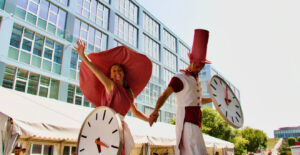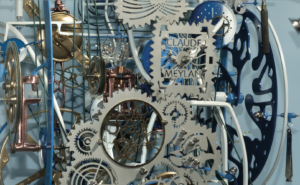To mark the International Year of Glass and the jubilee year of the École d’arts appliqués (School of Applied Arts) in La Chaux-de-Fonds, from 2022, May 1st to November 6 the MIH will host an exhibition entitled The Brilliance of Glass , showcasing the finest masterpieces of the art of enamelling. Thanks to loans from numerous public and private institutions, more than 150 of the most beautiful enamelled objects ever created will sit alongside the School’s study collection in this unique exhibition examining the techniques used to teach and pass on enamelling expertise. The exhibition at the MIH will open to the public at 5 pm on Saturday 30 April, and will run until 6 November 2022. It will be accompanied by a brochure and a programme of events and interviews with makers
A Selection of Ashmita Muthoora / @TRP, Public Relations Cabinet
Insta | Linkedin | Facebook
A magnificent exhibition dedicated to the art of enamelling.
The Brilliance of Glass, mastering the Art of Enamel
Enamel in all its forms – cloisonné, champlevé, painted, opaque, transparent or opalescent – has been a source of fascination for centuries. Behind the apparent simplicity of its composition of glass and metal oxides lies the expert skill of the enamellers who have mastered its preparation, application and firing in the furnace. Even today, decorating a watch with enamel is a kind of alchemy that is still part shrouded in mystery.
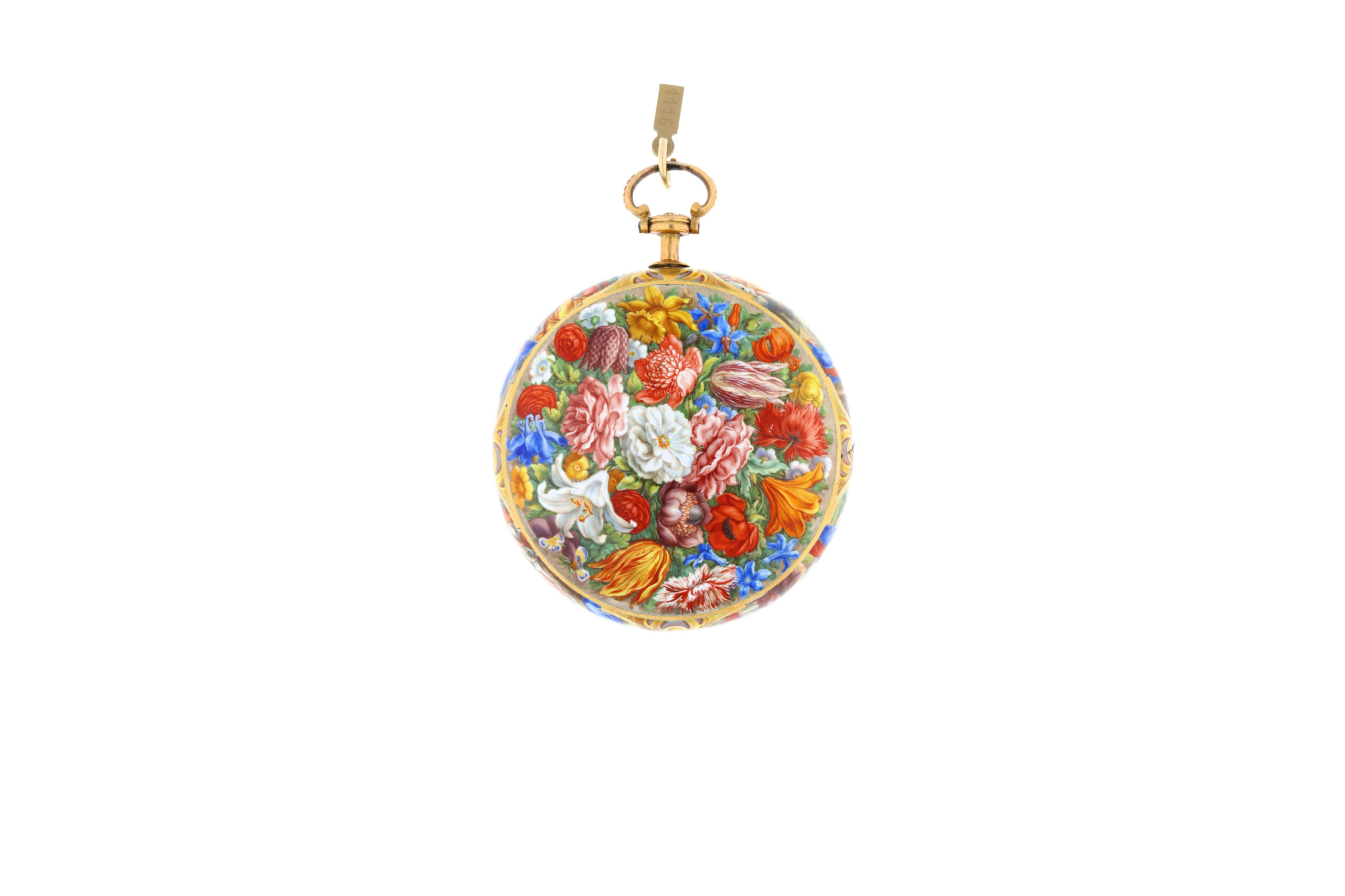
To mark the 150th anniversary of the School of Applied Arts in La Chaux-de-Fonds, and to coincide with the UN’s “International Year of Glass”, the Brilliance of Glass exhibition showcases the traditional techniques of enamelling applied to the decoration of timepieces. Following on directly from the exhibition entitled Transmissions. Photographing the Intangible dedicated to mechanical watchmaking expertise, this exhibition will highlight the art of enamelling in all its finery thanks to loans from numerous public and private institutions, and will also cover the challenges – past and present – in training enamellers through an examination of the School’s impressive collection of industrial arts.
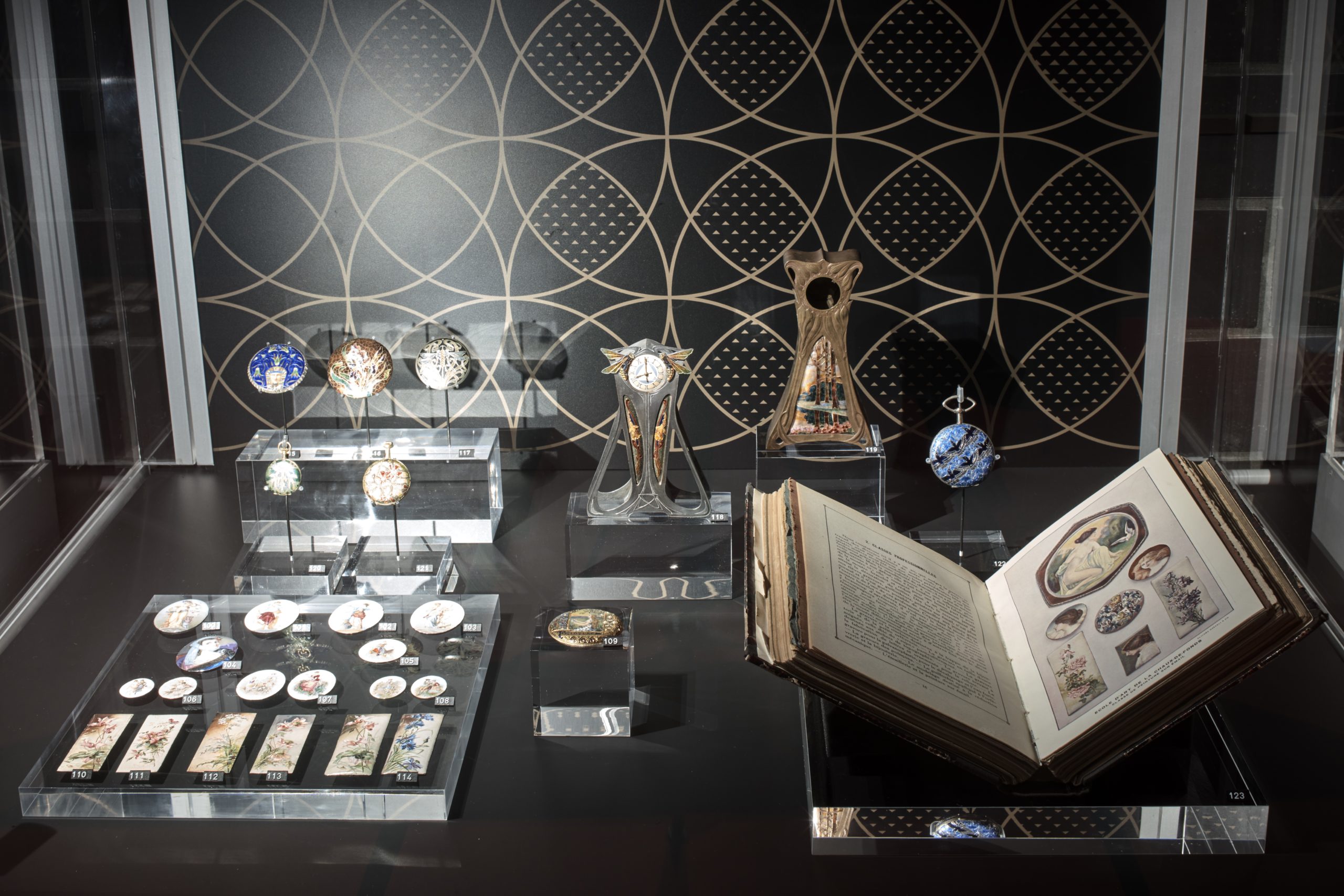
State of the art: a review with a look into the future
The Brilliance of Glass highlights many contrasts: the artisan enamellers creating masterpieces and those who commissioned them; the simplicity of the material and the great complexity of its mastery; the current appeal of enamelled timepieces and the absence of a well-established apprenticeship route. This trilingual exhibition (French, German, English) is divided into four main sections.
Humble prestige
Decoration has always been a fundamental element of any timepiece. Precious stones and engraved and enamel decoration were used to enhance the beauty of these timepieces, which were seen as objects to be used to advertise the wealth of their owners. The staging in this first space underscores the dichotomy between the clientèle for this type of status symbol – the “powerful” – and the artisans producing them. The latter were often humble, modest individuals who, with a very few exceptions, tended to remain in the shadow of their sponsors or their watchmaker employers. This section presents numerous historic masterpieces notable for the technical mastery of their enamelling and their excellent state of preservation.
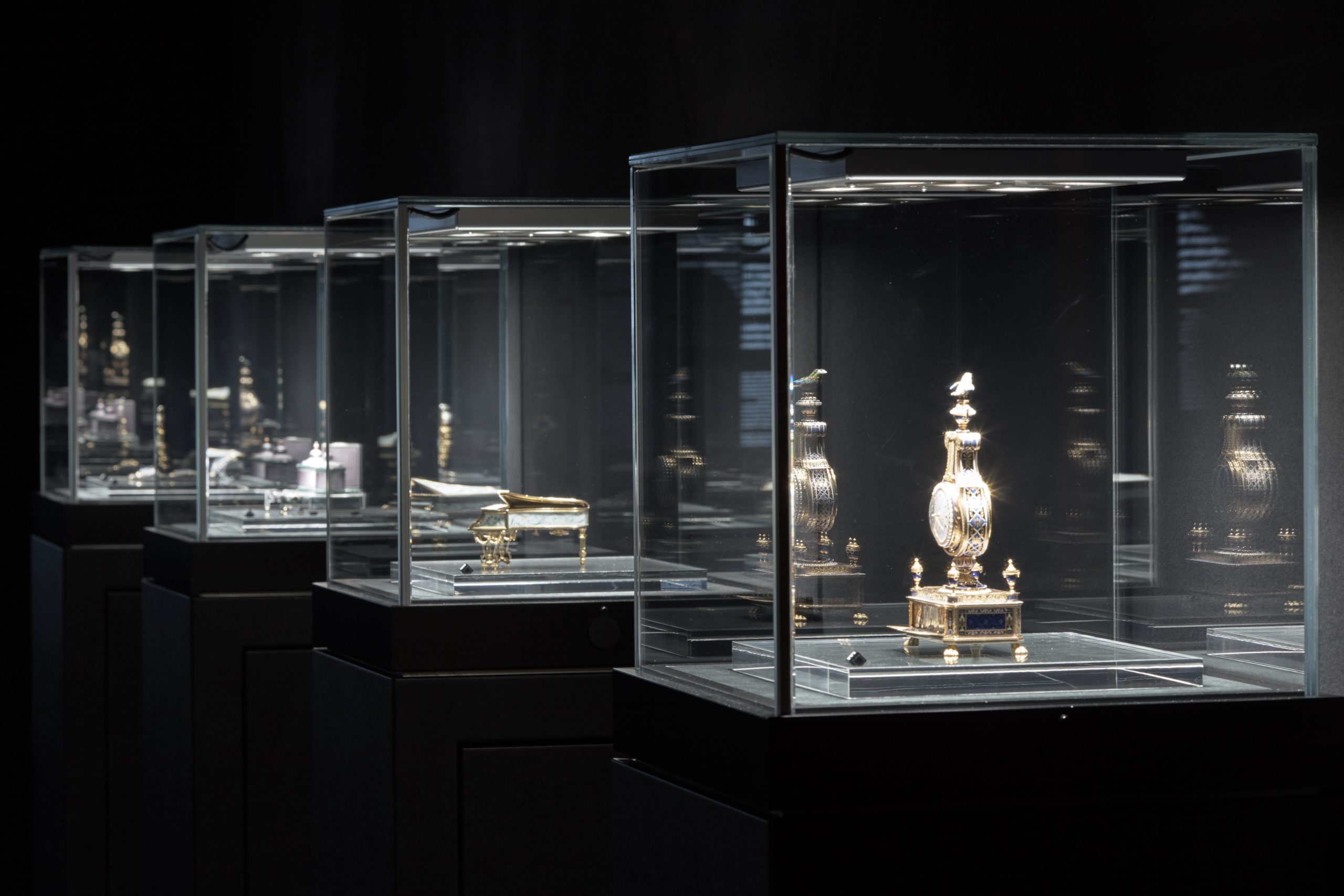
The journey to the furnace
Enamel is made from glass coloured using metal oxides. Despite its apparent simplicity, the material is extremely complex to work with. This section, which covers enamelling techniques, introduces the raw materials, the extreme skill and sensitivity required on the part of the artisan during the various preparatory stages and the many potential failures that can occur when creating a piece, notably during the successive firing operations. It takes visitors on an educational journey through the creative process by exhibiting objects at various stages of production. Visitors can try their hand at crushing enamel in an agate mortar and creating their decoration by (digitally) applying the colours of their choice to model watch cases dating from the early 20th century.
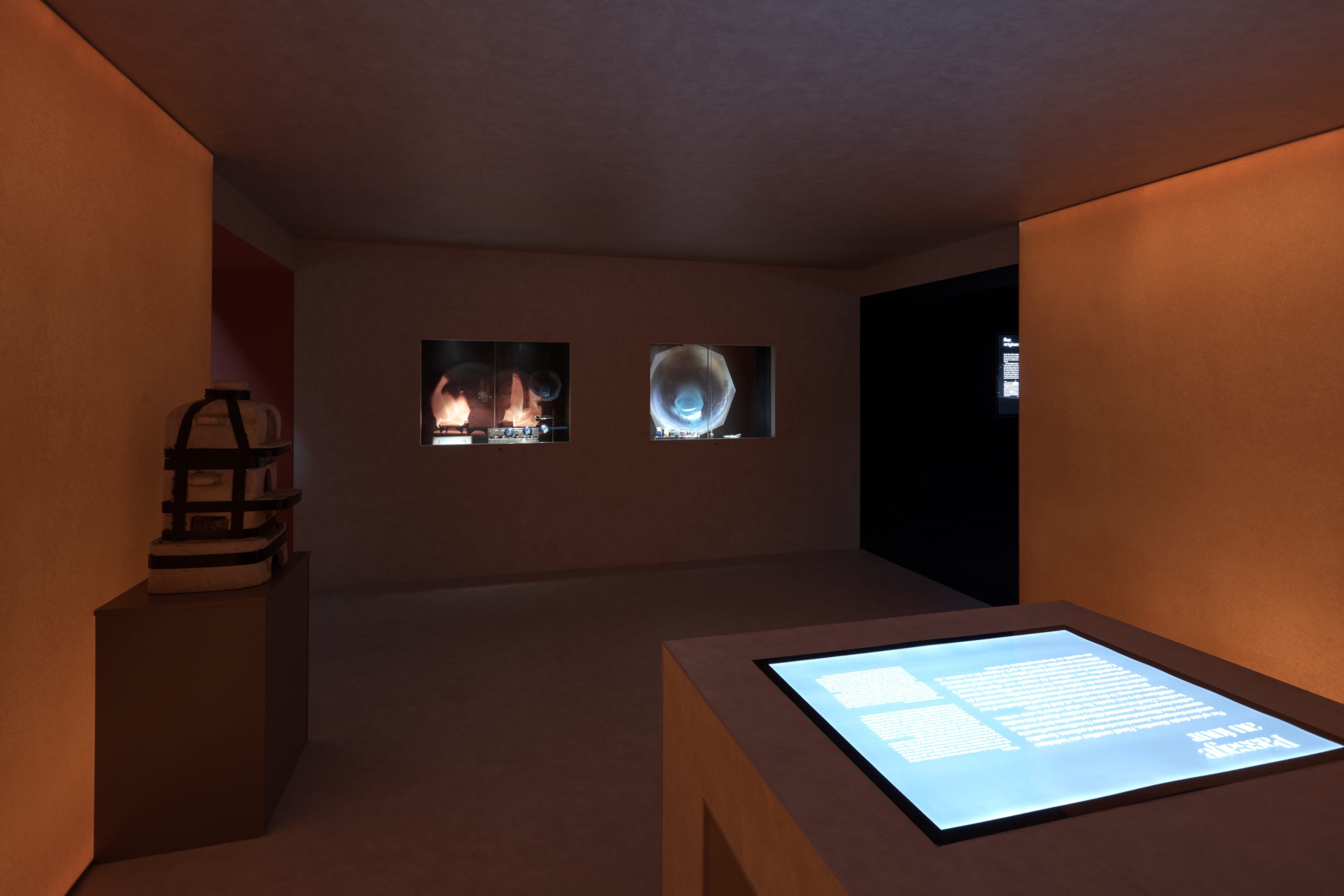
Enamelling techniques
This section offers an instructional introduction to the main enamelling techniques developed over the course of centuries. The aim is for visitors to gain an understanding of the terminology and specific characteristics of the different techniques used to apply enamel to a timepiece (champlevé enamel, cloisonné enamel, translucent enamel on guilloché, paillonné enamel, miniature painting) and to recognise them.
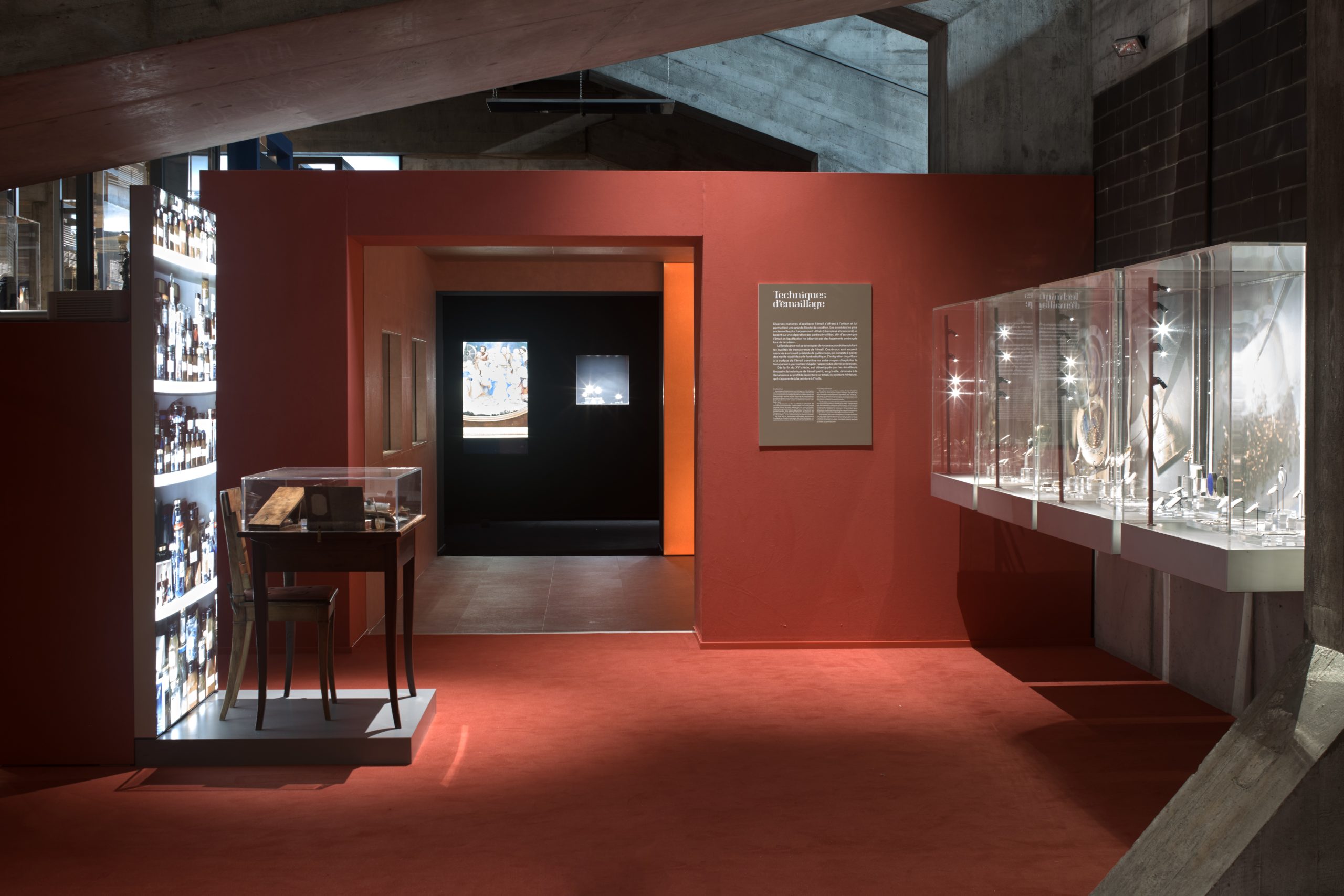
Avenues for transmission
The final section examines the teaching processes and the importance of the ongoing, exploratory nature of enameller training. The School of Applied Arts was founded by master engravers facing a shortage of qualified workers to decorate watch cases. This section of the exhibition explores the strategies employed by artisans to preserve a degree of secrecy in the creation of enamel recipes, and the importance and continuity of mentoring in the training process. It reveals the sources of inspiration used to create both historic and contemporary pieces, and presents a selection of work produced by students. It underlines the paradox between the over-valuation of enamelled objects and the absence of well-established apprenticeship routes. Four portraits of independent enamellers filmed in their working environments by the director and ethnologist Sélima Chibout are featured in the centre of this space
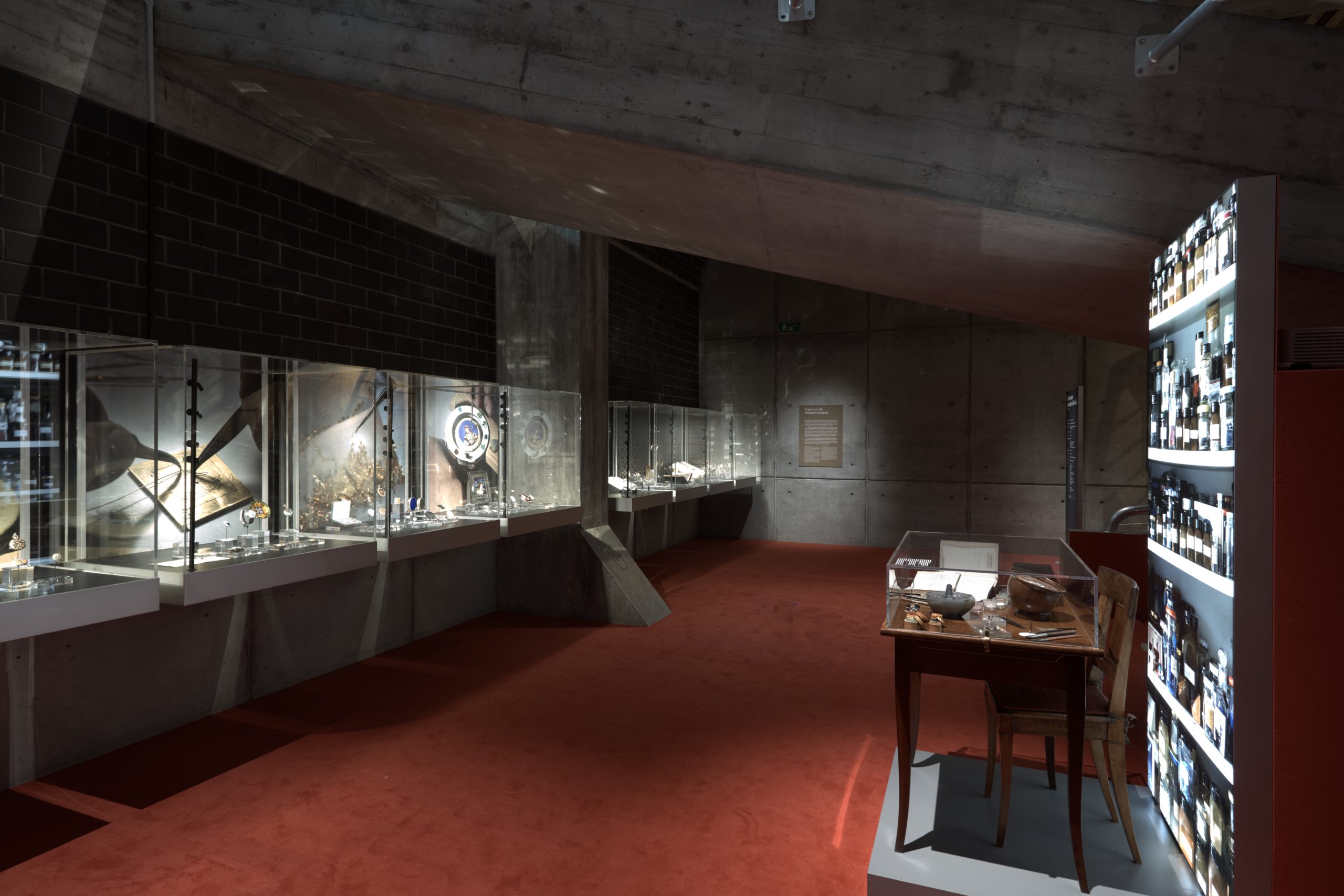
Over 150 objects from around the world
Featuring more than 150 objects and documents from a diverse range of reference collections, the exhibition represents a unique opportunity to explore – as a single collection – multiple pieces only very rarely displayed in public. On either side of the central row of exhibits comprising the collections of the MIH and the School of Applied Arts, many of which are displayed for the first time, the exhibition will also feature a number of important and iconic enamel works on loan from various public institutions. Numerous masterpieces of miniature painting and enamelled jewellery have been obtained from the collections of the Museum of Art and History of Geneva, and the Watch Museum of Le Locle – Château des Monts has also loaned several pieces, including its famous Singing bird mirror (Frères Rochat). A large number of well-known private institutions have also contributed works: Cartier Collection, Edouard et Maurice Sandoz Collection, Patek Philippe Museum Geneva, as well as companies (Cartier, Chopard, Hermès, Manufacture Jaeger-LeCoultre, Patek Philippe) and independent artisans (Anita Porchet, Debora Martinez) or young people in apprenticeship (Richemont Campus).
A trilingual brochure (French, German, English) will accompany the exhibition. The brochure, which features around 100 illustrated pages, is published by Éditions Livreo-Alphil as part of the Trésors des musées collection. Written by the art historian Estelle Niklès van Osselt, it focuses on the collections of enamel pieces held by the MIH and the School of Applied Arts and includes reproductions of more than fifty objects.
The exhibition will be accompanied by a mediation programme designed to provide an introduction to enamelling and enable visitors to meet the artisans.




